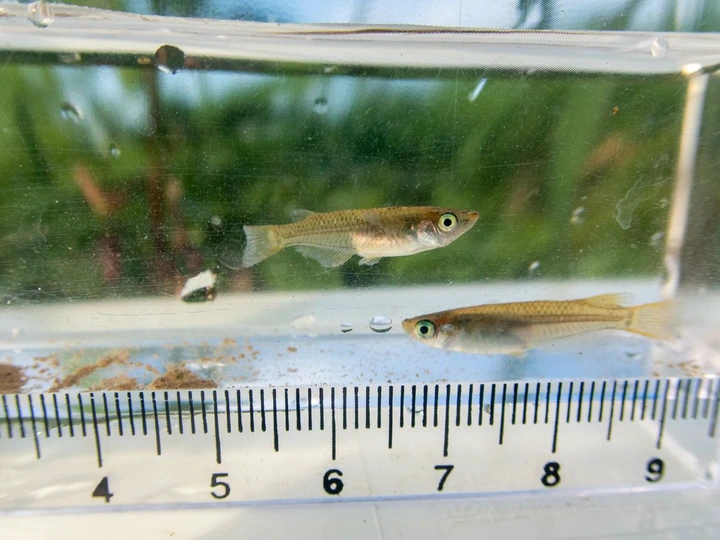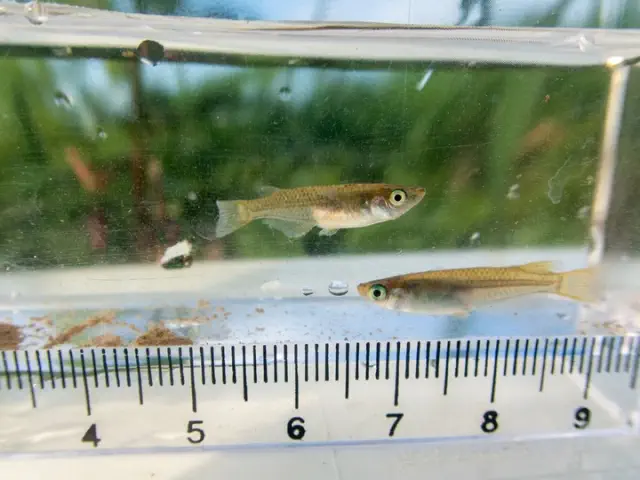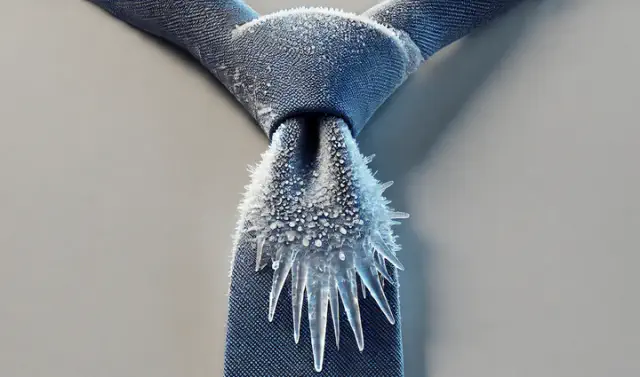The scientists observed a marked decline in sperm quantity following the tenth mating.

View pictures in App save up to 80% data.
The animal kingdom can get pretty weird when it comes to sex and relationships. Different creatures have evolved all sorts of methods to pass on their genes to the next generation and beat out competitors in the process. For the Japanese rice fish, researchers have discovered that it's all about how many times a day the males are getting freaky, which could be as many as 27.
Japanese rice fish – also known as medaka (Oryzias latipes) – are a small, unassuming species that live wild in the marshlands and rice fields of Japan. They are externally fertilizing fish, which means they release sperm or eggs into the water column, where they fertilize.
“Medaka are among the fish that spawn, where fertilization occurs after the eggs and sperm are released in water. As these gametes are difficult to collect, the number of sperm released and the fertilization rate during successive matings had remained a mystery,” study co-author Dr Yuki Kondo explained in a statement. “Our research group previously developed an accurate method for measuring the sperm count of medaka, which is why we were able to successfully conduct this experiment.”
During the breeding season, which spans from April to September, female fish typically spawn once each day, while males can ejaculate several times within a single day. In the research conducted, a male fish was paired with a female until mating took place or until a duration of 20 minutes elapsed. Following this, the male was moved to a different tank containing a new female. This procedure was repeated until the males were unable to successfully mate with three consecutive females.
The frequency of mating among the males showed significant variation, with some mating as few as 4 times in a single day and others reaching up to 27 times. On average, the males managed to mate approximately 19 times each day.
The researchers focused primarily on the quantity and quality of sperm produced after each mating session. In the initial three matings, the fish expelled over 50 percent of their daily sperm, resulting in a fertilization rate close to 100 percent for the eggs. However, as the number of matings increased, a marked decline in fertilization rates was observed after the 10th mating. In certain later matings, fertilization was completely absent. This indicates that females might be jeopardizing their eggs by mating with males who have already engaged in numerous other matings within a brief timeframe.
“This study represents the first quantitative analysis of the daily mating capacity of male medaka, detailing the amount of sperm expelled during each mating event, the fertilization rates achieved, and the mating behaviors exhibited by both males and females,” stated co-author Professor Satoshi Awata. “Our findings offer valuable perspectives on the connection between gamete production costs and the dynamics of sexual selection.”
The paper is published in the journal Royal Society Open Science.










